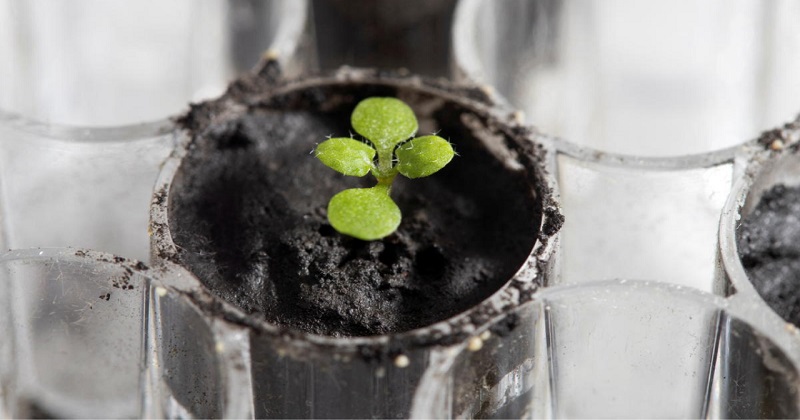
For the first time, scientists have grown plants on dirt recovered from the moon by NASA’s Apollo astronauts. Researchers had no clue whether anything would sprout in the tough moon dirt and wanted to investigate if it might be utilised to grow food by the next generation of lunar travellers. The results astounded them. ‘Holy cow. Plants can grow in lunar material. Are you kidding me?’ remarked Robert Ferl of the University of Florida’s Institute of Food and Agricultural Sciences. Ferl and his colleagues planted thale cress on lunar dirt returned by Apollo 11 astronauts Neil Armstrong and Buzz Aldrin, as well as other moonwalkers. The good news is that every seed germinated.
The drawback was that during the first week, the coarseness and other qualities of the lunar soil strained the little, blooming weeds so severely that they developed more slowly than seedlings put in imitation moon dirt from Earth. The majority of the moon plants were stunted. The findings were published in Communications Biology on Thursday. The longer the soil was exposed to the moon’s damaging cosmic radiation and solar wind, the worse the plants appeared to fare. According to experts, the Apollo 11 samples, which had been exposed to the elements for a couple billion years longer due to the ancient surface of the Sea of Tranquility, were the least favourable to development.
‘Knowing that you can grow plants is a huge step forward,’ said Simon Gilroy, a space plant biologist at the University of Wisconsin-Madison who was not involved in the work. ‘The genuine next step is to go and perform it on the moon’s surface.’ The moon mud is loaded with microscopic glass pieces from micrometeorite hits that went everywhere in the Apollo lunar landers and wore down the spacesuits of the moonwalkers. One approach might be to dig up planting soil from younger geologic features on the moon, such as lava flows. The environment might also be changed by changing the nutrition mix or tweaking the artificial illumination.
Six Apollo teams brought back just 842 pounds (382 kilos) of moon rocks and dirt. After returning from the moon, the Apollo astronauts dusted some of the first moon dust on plants in quarantine in Houston. The majority of the lunar cache remained locked away, requiring researchers to do experiments on Earth using mimicked volcanic ash soil. NASA ultimately sent the University of Florida researchers 12 grams early last year, and the long-awaited planting took place in a lab in May. NASA claimed the timing was finally perfect for such an experiment, with the space agency hoping to return people to the moon in a few years.
According to experts, the ideal condition would be for future astronauts to tap into the unlimited supply of available local dirt for indoor cultivation rather than putting up a hydroponic, or all-water, system. ‘The fact that anything grew implies that we have a pretty strong starting point, and now the question is how can we optimise and enhance,’ said NASA’s programme scientist for space biology, Sharmila Bhattacharya. Later this year, the Florida scientists intend to recycle their lunar soil by growing additional thale cress before maybe moving on to other flora.

Post Your Comments